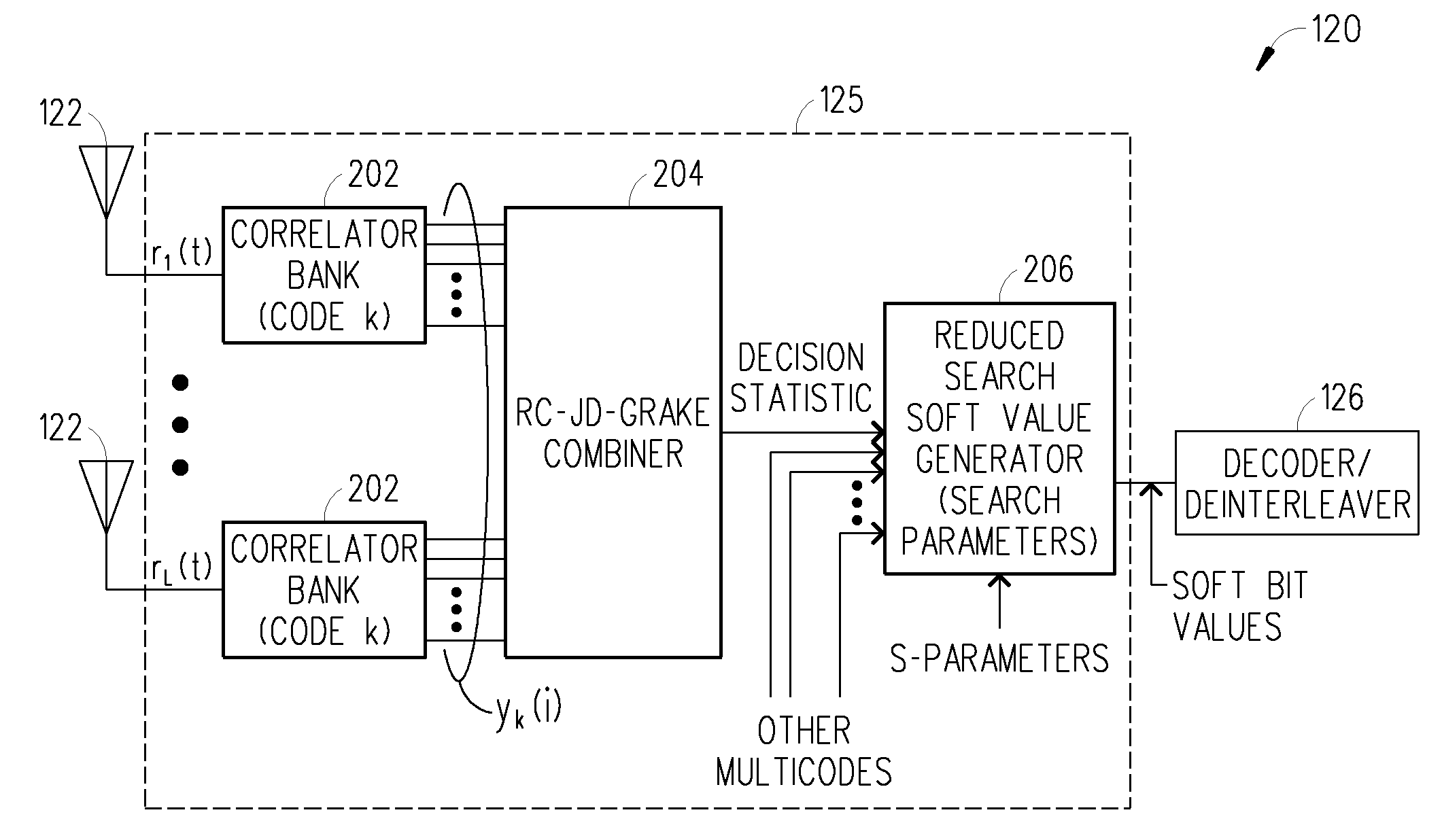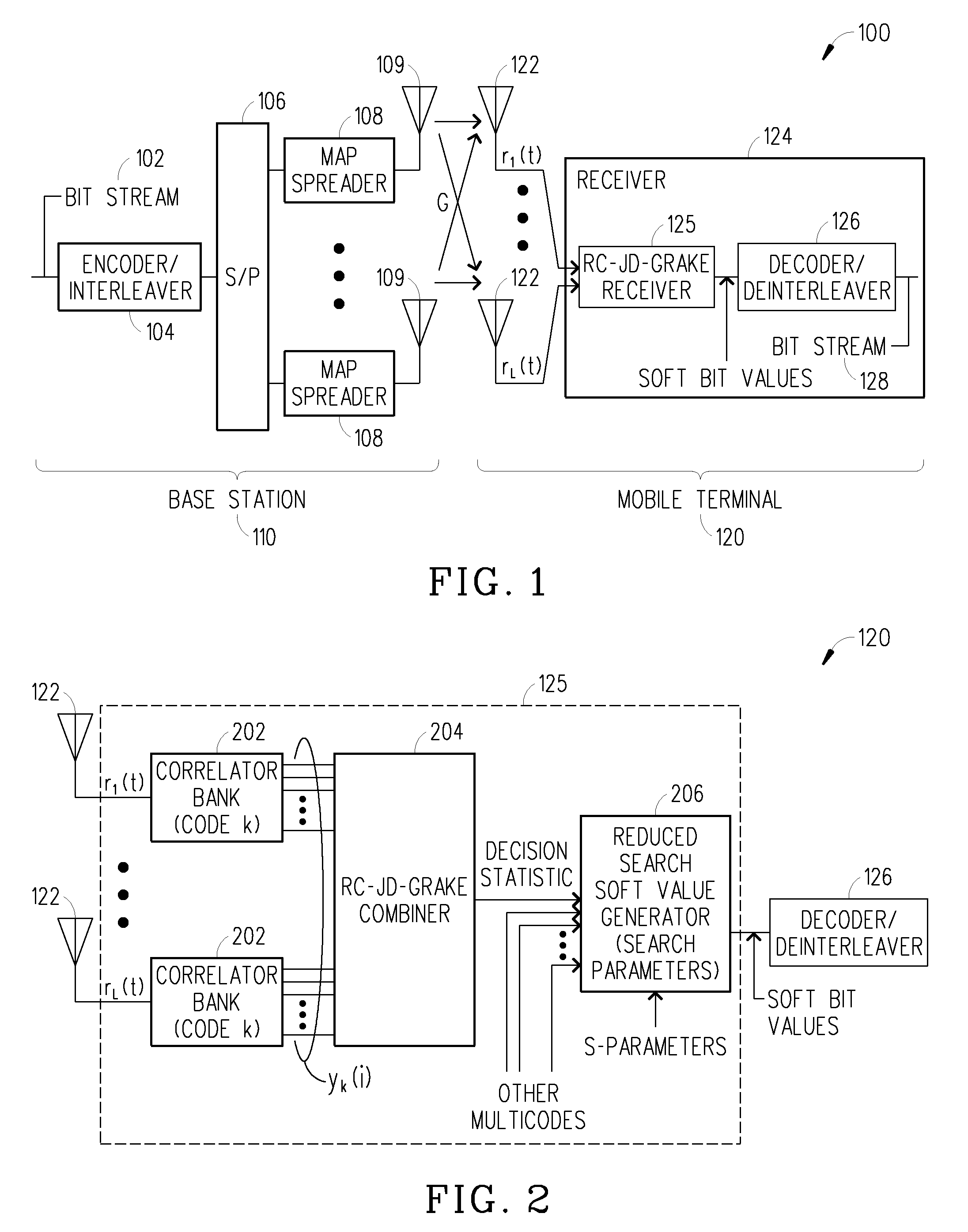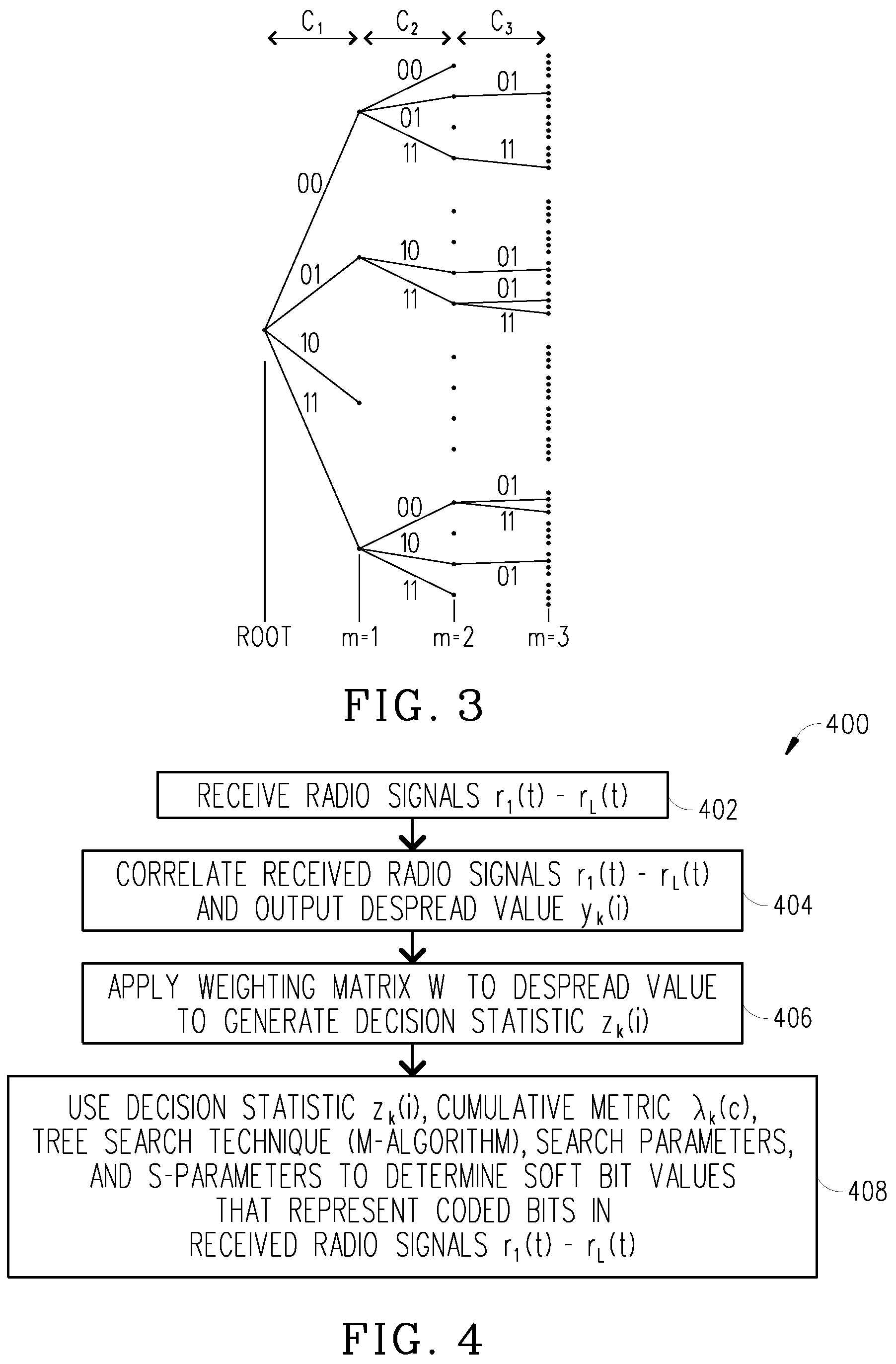Reduced complexity soft value generation for multiple-input multiple-output (MIMO) joint detection generalized RAKE (JD-GRAKE) receivers
a technology of reduced complexity and receivers, applied in the field of wireless telecommunications, can solve the problems of self-interference, multiple access interference (mai) and inter-symbolic interference, and the memory and/or processing power of mobile terminals is typically quite limited
- Summary
- Abstract
- Description
- Claims
- Application Information
AI Technical Summary
Benefits of technology
Problems solved by technology
Method used
Image
Examples
Embodiment Construction
[0020]Discussing and illustrating details in the exemplary embodiments of the present invention necessarily involves a certain level of complexity. Such complexities are explored in the exemplary details given later herein but an initial understanding of the present invention's broader aspects may be gained with reference to the relatively simple diagram given in FIG. 1. However, before discussing FIG. 1, it should be understood that the present invention broadly involves the application of GRAKE-based signal detection in combination with joint detection techniques.
[0021]As used herein the term “GRAKE” connotes a RAKE combining circuit and / or combining method that calculates impairment correlations between the streams of despread values being RAKE combined by the circuit. Such impairments arise, for example, because of MAI (multiple access interference), aggressive spreading code reuse, channel fading conditions, etc. Note that own-cell MAI may be accounted for as interference, whil...
PUM
 Login to View More
Login to View More Abstract
Description
Claims
Application Information
 Login to View More
Login to View More - R&D
- Intellectual Property
- Life Sciences
- Materials
- Tech Scout
- Unparalleled Data Quality
- Higher Quality Content
- 60% Fewer Hallucinations
Browse by: Latest US Patents, China's latest patents, Technical Efficacy Thesaurus, Application Domain, Technology Topic, Popular Technical Reports.
© 2025 PatSnap. All rights reserved.Legal|Privacy policy|Modern Slavery Act Transparency Statement|Sitemap|About US| Contact US: help@patsnap.com



